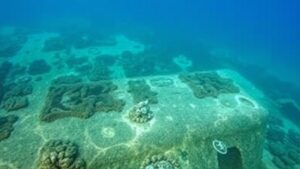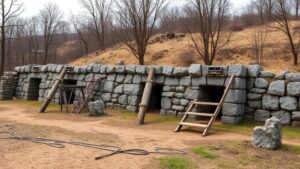Prompting AI to Reconstruct Sunken Harbor Layouts for Maritime Relic Discovery
Introduction
The reconstruction of sunken harbor layouts for maritime relic discovery has gained prominence in archaeological research, particularly as advanced technologies, including artificial intelligence (AI), provide new methodologies for the interpretation of submerged landscapes. This article explores the integration of AI prompt strategies in reconstructing the layouts of historic harbors submerged beneath water bodies, detailing the methodologies, case studies, and implications for maritime archaeology.
Understanding AI in Archaeology
Artificial intelligence serves as a transformative tool in various fields, including archaeology. By employing advanced algorithms and machine learning techniques, researchers can analyze large datasets more efficiently than traditional methods allow. As a result, AI facilitates the identification and reconstruction of historical sites that have long been obscured by natural and anthropogenic factors.
Case Study: The Port of Alexandria
One exemplary case of AI application in maritime archaeology is the Port of Alexandria, Egypt, historically known as one of the largest and most significant harbors of the ancient world. The port has undergone considerable sedimentation and infrastructural changes, obscuring its original layout.
- In recent studies, researchers collected underwater LiDAR (Light Detection and Ranging) images, which provided detailed topographic data of the submerged structures.
- AI algorithms were implemented to analyze the patterns in the data and reconstruct the port layout, revealing significant structural remnants, including docking areas and warehouses.
Methodological Framework
Reconstructing sunken harbor layouts requires a multi-faceted approach involving various scientific disciplines. The following methodological framework outlines the key components in utilizing AI for this purpose:
- Data Collection: Gathering high-resolution data from multiple sources, including underwater surveys, historical maps, and satellite imagery.
- Prompt Engineering: Designing effective prompts that guide AI models to focus on relevant aspects of the data, thereby producing tailored outputs that reflect historical accuracy.
- Machine Learning Analysis: Employing algorithms to identify and predict the locations of submerged relics based on the input data.
- 3D Reconstruction: Utilizing software tools to visualize the reconstructed layouts, facilitating further research and exploration.
AI Prompting Techniques
Effective prompting strategies are essential in enhancing AI model performance. Researchers focus on several techniques:
- Descriptive Prompts: Providing comprehensive descriptions of the desired output helps in generating more accurate reconstructions.
- Contextual Prompts: Situating the reconstruction task within historical or geographical contexts aids AI systems in understanding spatial relationships.
- Iterative Refinement: Continuously refining prompts based on initial model outputs allows archaeologists to hone in on specific layouts or relics more effectively.
Challenges and Limitations
While the integration of AI in maritime archaeology yields promising results, several challenges persist:
- Data Quality: The accuracy of AI-driven reconstructions is contingent on the quality of input data. Often, historical records are incomplete or inconsistent.
- Model Bias: AI models can inadvertently reflect biases present in the training data, potentially distorting reconstructions.
- Interdisciplinary Collaboration: Successful implementation of AI techniques requires collaboration between data scientists and archaeologists, which can be difficult to establish.
Real-World Applications
The techniques outlined in this study have real-world applications that extend beyond academic research:
- Tourism Development: Reconstructed harbor layouts can boost tourism by enhancing public engagement with historical sites.
- Conservation Efforts: Understanding the historical significance of submerged sites assists in the development of preservation strategies.
Conclusion
The prompting of AI technologies to reconstruct sunken harbor layouts represents a significant advancement in maritime archaeology. By leveraging AI methodologies, archaeologists can uncover new insights into historical maritime trade, cultural exchanges, and urban planning efforts. As technological capabilities continue to evolve, the potential for more accurate reconstructions and further discoveries in underwater contexts remains vast and largely untapped.
Actionable Takeaways
- Investigate opportunities for funding research that integrates AI with archaeological studies.
- Engage in interdisciplinary collaborations to strengthen the methodologies employed in maritime archaeological research.
- Stay informed about advances in AI and machine learning that can enhance archaeological techniques.



